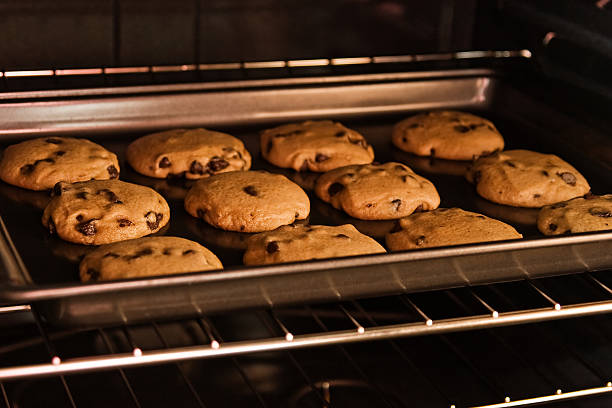9 Tips to Make Sure Your Pizza Base Does Not Become Soggy
Soggy pizzas are the worst. If you are tired of cooking lumpy, mushy pizzas, read our article on how to make the pizza base crispy.

One big challenge people face while making pizzas is that the base either becomes too crispy or soggy. While you can deal with a crispy crust, a soggy one is a definite red flag.
Many people have learned to make delicious pizzas from the comfort of their homes. However, when the base or the crust of the pizza is soggy, it becomes an unpleasant experience for your taste buds.
If you are learning how to make restaurant-grade pizzas and prevent the base from getting soggy, the tips listed below will be of great help. But before that, let us look at a few factors why a pizza base gets soggy.
Why Does the Base Become Soggy?
Some common reasons for pizza base becoming soggy include-
- Using the wrong kind of flour
- Not mixing the dough properly
- Using bad quality cheese
- Not thinning out the base
- The pizza is not cooked long enough
How To Stop the Pizza Base from Getting Soggy
You can make the best homemade pizzas in a pizza oven. If you are confused about which oven to get, check out https://artisanpizzaovens.net for a list of great ovens and choose one that suits your needs.
Aside from the oven, you still need to consider the following factors to make a crispy and flavorful pizza.
1. Use Unbleached Flour
There are various types of flour out there. All-purpose flour, whole wheat flour, pastry flour, cake flour, bread flour, and so on. No matter which one you use, make sure the flour is unbleached. An unbleached all-purpose flour will give you the best results.
Unbleached flour is aged naturally after it was produced from a mill. These flours are rich in protein and gluten. High gluten means the dough will be flexible and elastic; perfect for making a pizza base. This high elasticity prevents the Pizza base from becoming soggy.
2. Properly Cook the Pizza
In most cases, the pizza base gets soggy because it has not been cooked properly. You need to keep it on the stove or in the oven for a fixed time and at a certain temperature.
Generally, using the highest temperature is best for cooking a pizza. However, you must prepare your oven by preheating it for at least one hour. Then, slowly reduce the temperature every two to four minutes.
This will ensure that the base of your homemade pizza remains crispy and the toppings are not burnt into charcoal.
3. Stretch the Dough
You need to stretch out the dough and make it as thin as possible. Otherwise, the pizza base will not receive enough heat. This will result in some parts of the base remaining uncooked and soggy.
If the dough is stretched to a point where you can almost see through it, then it is stretched properly. If you cannot see through, then you need to stretch the dough some more.
4. Use Thick Sauce
The sauce is a staple flavor enhancer for pizzas. Some people use tomato sauce while others prefer chili sauce. No matter which one you use, make sure the sauce is thick and consistent. Leonardo’s pizza sauce can be an excellent choice.
A thick sauce does not go through the pores of the dough. If the sauce is thin or liquidized, then it will easily seep into the dough. This watery sauce will make the pizza base soggy and lumpy. So, use the thick sauce to keep the pizza base crispy, and enhance the taste of the pizza.
5. Apply The Right Cheese
It is hard to imagine pizza without cheese. However, just because pizzas always need cheese, does not mean you can use any cheese. Some cheeses become oily and lumpy when heated. These are terrible for any pizza.
Instead, use cheese that stretches out and melts when heated. Some perfect examples are mozzarella, cheddar, and Parmesan. These types of cheese are stretchy, melts when heated, and provides excellent taste. Avoid using cheese with high moisture content.
6. Avoid Using Cold Dough
If you have the dough stored in the freezer, do not use it immediately to cook. As the dough will be cold, it will become damp as you stretch it. Besides, it will take a long time to get warm, and might even burn the toppings in the process.
If you have a cold dough, keep it at room temperature for at least 2 hours. This will be sufficient to dry any additional moisture and keep the dough warm enough to start stretching. It also reduces the chance of water particles inside the dough.
7. Limit Your Toppings
More does not necessarily mean better. More topping means more wet ingredients on top of your pizza base. And the more wet ingredients, the greater the risk of having moisture seep into the pizza base. If you already have one wet ingredient, add only one more.
For instance, if you have added sauce, then you can use either cheese or olive oil. Keep it limited to two wet toppings. Even dry toppings like black olive leak oil when heated. So, avoid using too many toppings. You can limit your use to four altogether.
8. Reheat with a Towel
Most people reheat the pizza by directly putting it inside the oven. This is a bad habit. Since it was cold before, it will produce steam and make the pizza base soggy.
To prevent this, place a dry towel directly under the pizza. Towels are very good at absorbing moisture. A dry towel can absorb the steam released by the cold pizza and make it nice and crispy.
9. Use a Pizza Stone
You could cook a pizza without a pizza stone, but using one will guarantee you a crispy pizza base. Pizza stones are small boards that you can use instead of a pan.
Pans are thick and might not carry heat equally.
This uneven heat results in a soggy crust or pizza base. But pizza stones are flat and are highly heat conductive. Heat the pizza stone for at least one hour before placing the pizza on top of it.
Final Thoughts
The crispy base mixed with cheesy toppings can melt your taste buds. This is possible only if the base is crispy. So be very careful and keep a keen eye on the pizza base to check whether it is properly cooked or not.




